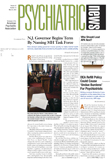Group therapies for drug and alcohol abusers use affiliation, support, and peer confrontation to help patients struggling to move from addiction to recovery. A new Treatment Improvement Protocol (TIP) from the Center for Substance Abuse Treatment of the Substance Abuse and Mental Health Services Administration helps define effective group therapy and may help group leaders improve their skills for running these sessions.
The document, designated “TIP 41. Substance Abuse Treatment: Group Therapy,” says that group therapy is popular because it is both effective and economical, since several patients can be treated at the same time.
“In the hands of a skilled, well-trained group leader, the potential healing powers inherent in a group can be harnessed and directed to foster healthy attachments, provide positive peer reinforcement, act as a forum for self-expression, and teach new social skills,” said the document, the product of a consensus panel headed by Philip J. Flores, Ph.D., an adjunct clinical supervisor in the department of psychology at Georgia State University in Atlanta.
The panel claimed several advantages for therapy groups. Groups allow members to see how others deal with similar problems; to witness their recovery; and to learn how to cope with problems, relate to other people, and gain new insight and information. They can reduce the sense of isolation that substance abusers feel by providing peer support and pressure to abstain. Power conferred by the shared experience of abusers can help them confront members who deny their problems. By extension, a single treatment professional can help several patients at once, but, as participation grows, the group members reinforce and expand the work of the leader. Groups add structure and discipline for people often enmeshed in chaos. They can instill a sense of hope.
Treatment programs draw from five group models:
•
Psychoeducational groups expand awareness of the behavioral, psychological, and medical consequences of substance abuse by teaching participants how to identify and avoid both emotional and external situations associated with substance abuse.
•
Skills-development groups use a cognitive-behavioral model to help participants develop ways to avoid triggers for drug use or to cope with urges to use drugs and to manage their anger and solve problems that would have previously sent them to drugs.
•
Cognitive-behavioral groups expand on this model, seeking to change learned behavior by changing thinking, beliefs, and perceptions. The leader helps group members develop their own capabilities in this area.
•
Support groups emphasize emotional sustenance but also help members cope with pragmatic concerns, like avoiding isolation and managing day-to-day living.
•
Interpersonal process group psychotherapy now emphasizes the social nature of human attachment, rivalry and social hierarchies, and cultural and spiritual issues. “Content is a secondary concern,” said the protocol. “This therapeutic approach focuses on healing by changing basic intrapsychic or interpersonal psychological dynamics.”
Running any of these groups requires advanced educational and supervised clinical training specifically for group therapy, said the TIP.
“People who abuse substances are supremely adept at helping group leaders make mistakes,” said the protocol. “Therapists need to become well versed in the substance abuse treatment philosophy and techniques of recovery, including the self-help approaches.”
There remains some argument over whether a group leader must be someone who is also a recovered addict.
“A leader in recovery will probably elicit trust more quickly from group members,” said the consensus panel. “[That], however, does not automatically make that person an effective therapist. Many counselors in recovery cannot make the switch from self- to client-centered approaches and hold rigid views of how to manage the recovery process.”
A separate, recent review of 24 prospective, treatment-outcome studies of group therapy for substance abuse disorders produced mixed results, depending on the design of the interventions; the populations studied; and the content, intensity, and length of the treatment.
“Three important patterns emerge from these results,” said Roger D. Weiss, M.D., William B. Jaffee, Ph.D., and colleagues from Harvard Medical School and McLean Hospital in the November/December 2004 issue of the Harvard Review of Psychiatry. “Additional specialized group therapy can enhance the effectiveness of `treatment as usual'; no differences were found between group therapy and individual therapy; and few differences were found among types of group therapy, with no particular type of group therapy emerging as superior to others.”
Weiss and colleagues noted the contrast between the widespread use of group therapies and the paucity of research on the subject. They attributed that in part to the difficulties of studying group therapy. The structure of group membership may vary, as do the independence and interdependence of the members, making measurements of results especially difficult.
TIP 41 is posted online at<www.ncbi.nlm.nih.gov/books/bv.fcgi?rid=hstat5.chapter.78366>. A free copy, designated as DHHS Publication No. (SMA) 05-3991, may be ordered by calling (800) 729-6686. An abstract of the study by Weiss et al. is posted at<www.ncbi.nlm.nih.gov/entrez/query.fcgi?cmd=Retrieve&;db=pubmed&;dopt=Abstract&list_uids=15764469>.▪
